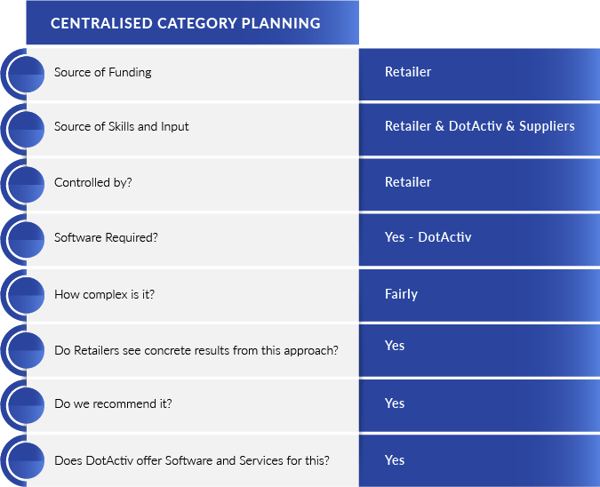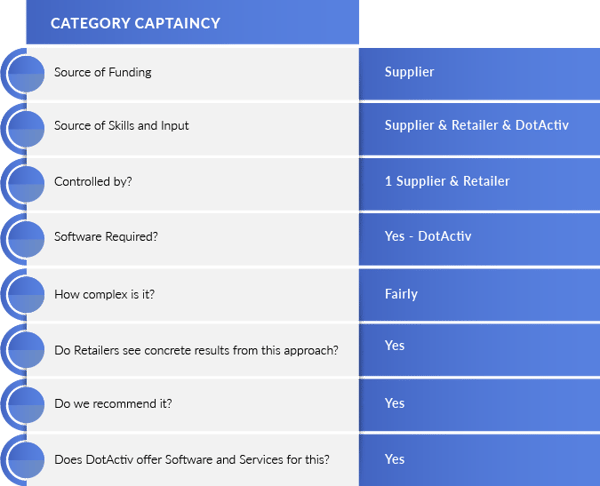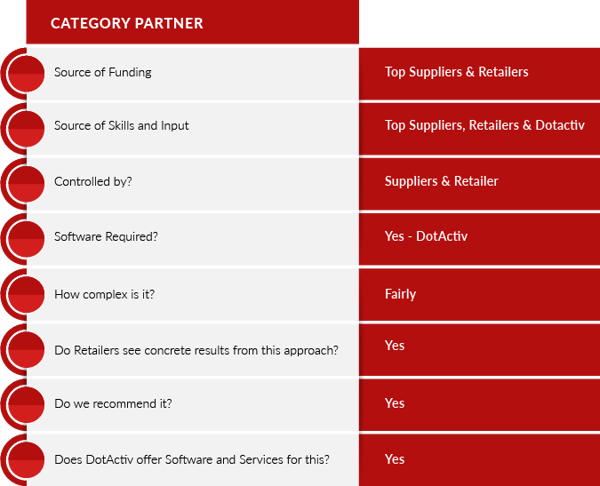Anyone reading this will agree that running and growing a retail chain, especially in South Africa, is easier said than done. That is especially true considering the relentless increases in the cost of your retail space, the threat of technology as well as rapid market shifts. That means the battle for efficiency and a favourable customer response is more intense than ever.
Fortunately, there is a strategy such as category management, which allows you to provide your customers with what they want, where they want it, and when they want it.
As a tactic, it’s well-proven and used by suppliers and retailers alike to improve revenue, profitability and the overall value proposition to customers. To make the most of it, though, you do need to pick an approach.
But which approach do you pick? Essentially, it comes down to adopting the one that is right for your organisation. After all, no two organisations are the same, no matter how similar they look.
With that said, here’s a high-level breakdown of a few popular category management approaches that are used by both retailers and suppliers.
1. Centralisation
The first is known as centralisation.
A number of retailers choose this approach to category management, and in so doing, take full control of the process.
In fact, while centralisation is more resource intensive, the very reason retailers enjoy this approach is because they are in charge of the process from beginning to end.
To counter the fact that this process is resource intensive, retailers often partner with expert outsource partners who have perfected the process through specialised software and industry experience.
Furthermore, in going this route, retailers often invite suppliers to provide insight where needed.

2. Category Captain
A category captain, defined as the leading manufacturer or supplier in a particular retail category, is often chosen by a retailer to the benefit of its overall business.
There is a good reason for this.
When this happens, the relationship between a retailer and supplier evolves for the better. While before, their relationship may have simply been about supply and demand and nothing more, in choosing a category captain, it’s now a collaboration where data is shared.
On the one hand, the supplier invests its time, skills, strategy and money into developing a category for the retailer. In return, the supplier gains a voice of influence with the retailer.
That doesn’t mean the category captain can now disregard other brands. Rather, they have to remain independent, look beyond brands, and focus on growing the category’s overall profitability and turnover. After all, this agreement is meant to benefit the retailer as well.
The category captain is also expected to act like a mature leader who treats the category as a “business within a business”.
These suppliers often choose an outsource partner to help them gain compelling, independent, and mature insights for the benefit of the category. Other category captains are also known to purchase specialised software from the same vendor and deliver their responsibilities in-house.

3. Category Partner
There is the old saying that two heads are better than one. What about extending that and saying three or even four heads are better than one?
That is why the category partner approach to category management is so popular. While working with a category captain has its perks, a retailer is only working with one supplier. On the other hand, going the category partner route allows a retailer to work closely with a handful of suppliers within any given category.
Viewed as the most collaborative form of category management, it is also less biased because more parties are policing the process. Here are a few tips on choosing the right category management partner.
There is also the fact that depending on how big the involved suppliers are, in going the category partner approach, there is the possibility of receiving additional funding.
Similar to the category captain approach, category partners also often choose an outsource partner to help them uncover compelling, independent and mature insights to benefit the categories. Meanwhile, others purchase specialised software from the same vendor and deliver their responsibilities in-house.

Conclusion
When it comes down to choosing which category management approach to take, it’s very much about looking at which is right for your organisation. It also depends on who you are and what you want to achieve.
If you’re a retailer, do the categories in your stores offer an attractive value proposition to your customers while remaining profitable and efficient?
If you’re a supplier, are you able to gain access to the tools, resources, and skills needed to ensure your input towards your categories come across as compelling, independent, and for the benefit of the category?
*Editor’s Note: This blog article was updated on 14 June 2017 for accuracy.


